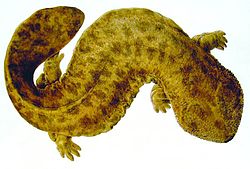| Liolope | |
|---|---|
| Scientific classification | |
| Domain: | Eukaryota |
| Kingdom: | Animalia |
| Phylum: | Platyhelminthes |
| Class: | Trematoda |
| Order: | Diplostomida |
| Family: | Liolopidae |
| Genus: | Liolope Cohn, 1902 |
| Species: | L. copulans |
| Binomial name | |
| Liolope copulans Cohn, 1902 | |
Liolope is a monotypic genus of trematodes, or fluke worms, belonging to the family Liolopidae. The only species is Liolope copulans. [1]
Contents
Baba et al. (2011) classified this species in the family Liolopidae, superfamily Diplostomoidea. [2]
